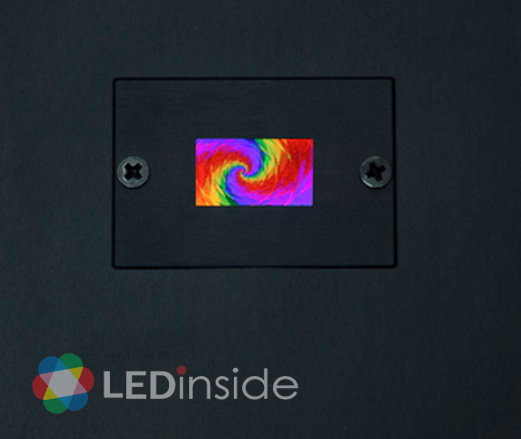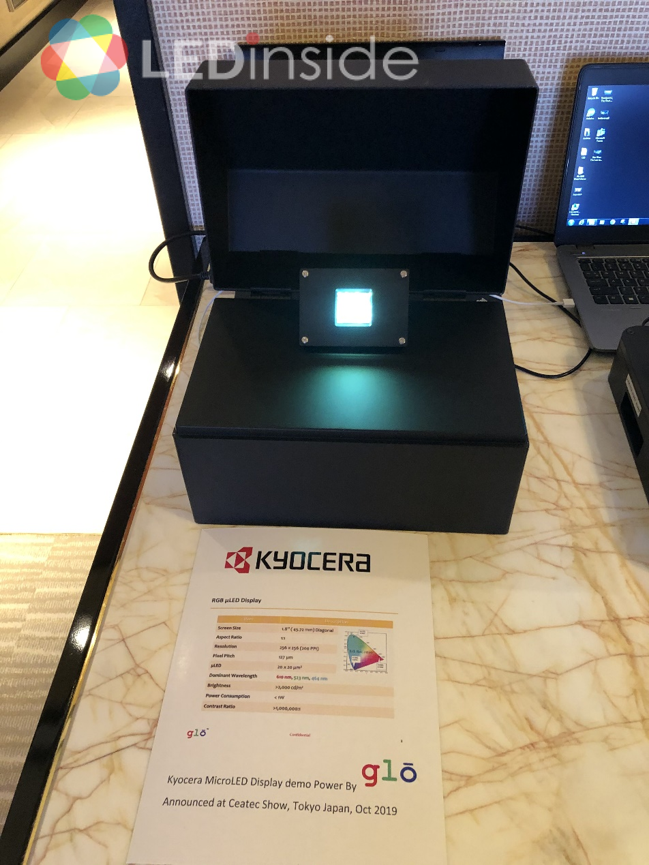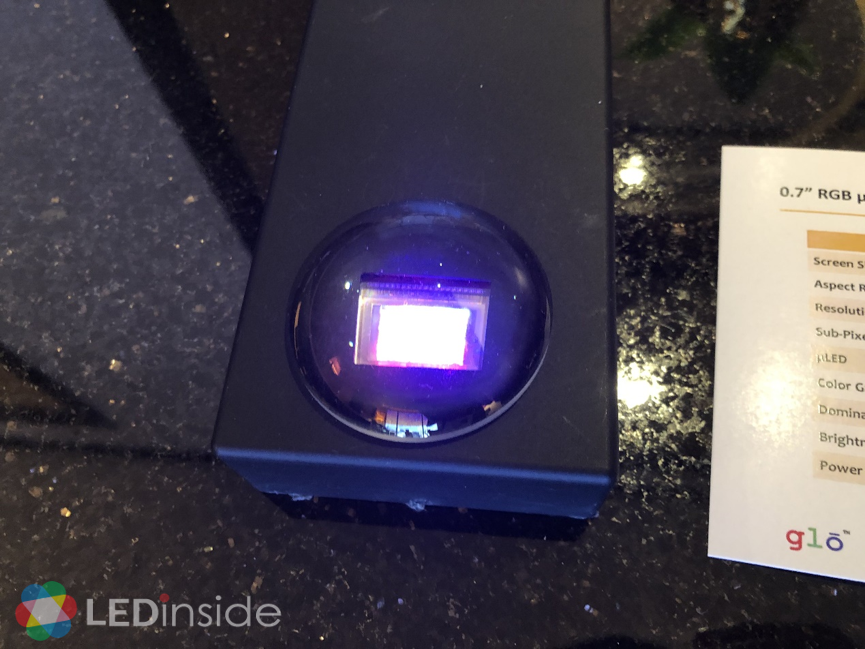After receiving $15 million investment from Google, the Lund University spin-out glō has been proactively presenting its Micro LED technology in the past two years by participating in various international events and expanding partnerships with worldwide display manufacturers.
LEDinside interviewed Saket Chadda, CEO of glō USA, at CES 2020 to further understand the company’s progresses on Micro LED technology.

During CES 2020, glō presented Micro LED displays that were built with different technologies including a 1.6-inch and a 1.8-inch full color Micro LED displays based on TFT backplanes which glō built with JDI and Kyocera respectively. Both displays have a PPI of 200-300. glō saind that its next target is to create full color Micro LED displays that are bigger than 2.5 inches.

What made glō outstanding at CES 2020 was that, comparing to other competitors who could only demonstrate mono color Micro LED displays for AR/VR applications, glō showcased a full color Micro LED display for AR/VR headset based on RGB LEDs. The display was based on a 0.7-inch CMOS backplane with RGB LED chips sized only 10*10µm, achieving a PPI of 525 and a brightness of 10,000 nits. Even though the display has yet reached the requirements of AR producer maker, glō offered a feasible approach.

Currently, Micro LED displays still encounter technology challenges including mass transferring and the efficiency issue with miniaturized chips. Chadda indicated that the features of glō’s technology is to create RGB full color Micro LED chips on GaN-based materials. In this way, the issue of red LED can be solved to realize full color Micro LED display with high PPI. In addition, its high yield and proprietary mass transfer technology enabled a transfer of 27,000 Micro LED chips in 20 minutes.
As for the schedule of mass production, Chadda said the internal goal is to begin mass producing small size Micro LED displays for AR/VR and smart watches by the end of 2020. Meanwhile, glō is also looking for more strategic partners to create innovative applications with its technology.
Original article by Roger Chu / Research Vice President of LEDinside, Trendforce. Edited and translated by Yining Chen / LEDinside














